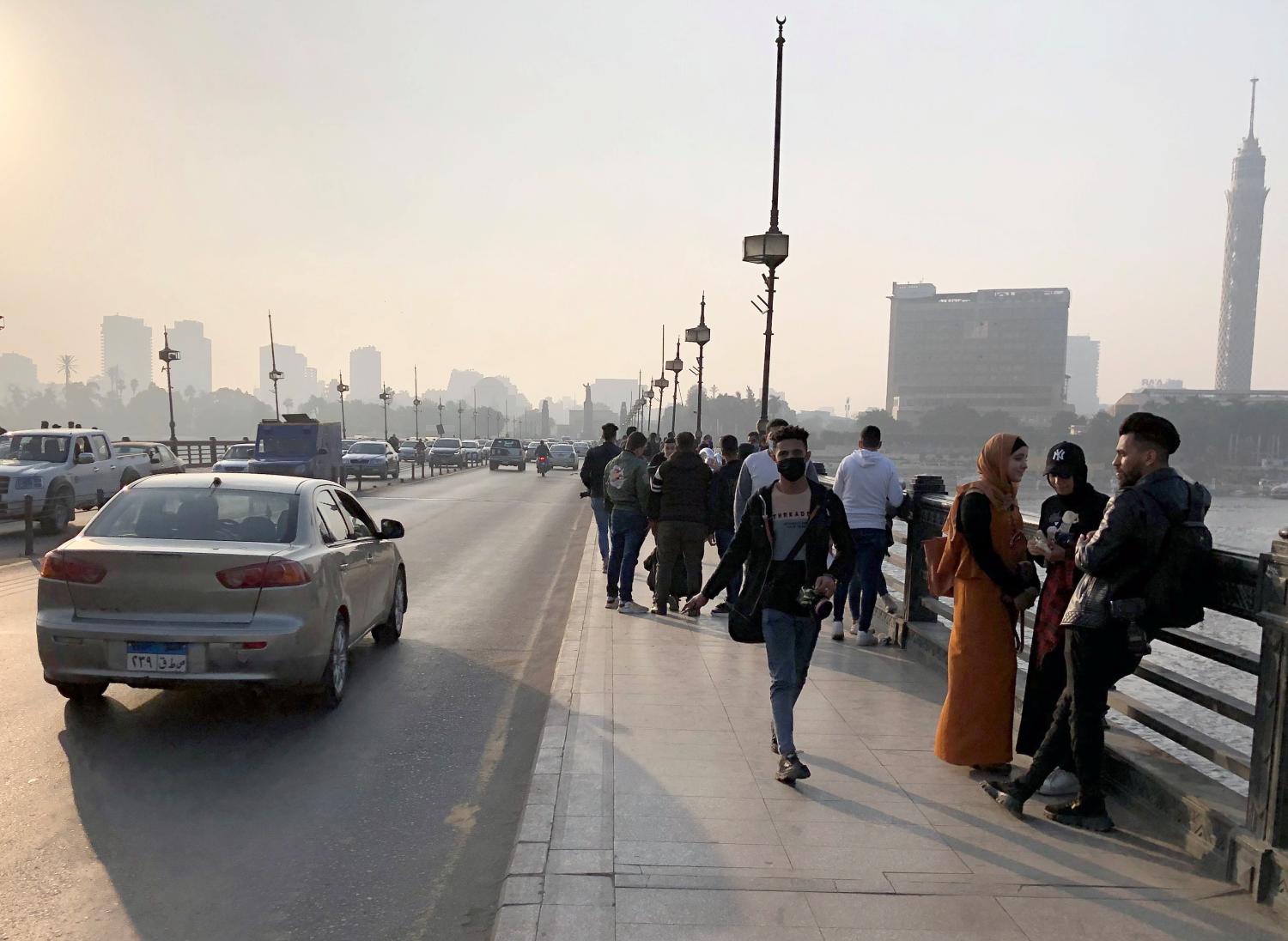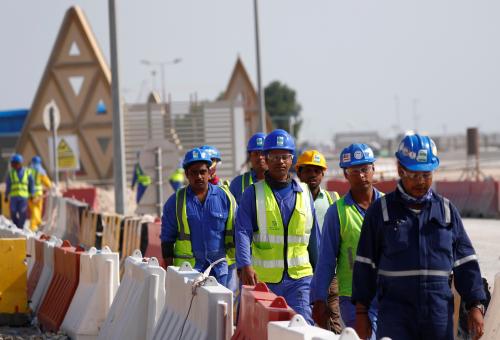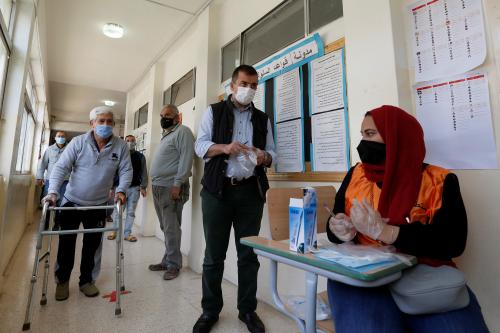Content from the Brookings Doha Center is now archived. In September 2021, after 14 years of impactful partnership, Brookings and the Brookings Doha Center announced that they were ending their affiliation. The Brookings Doha Center is now the Middle East Council on Global Affairs, a separate public policy institution based in Qatar.
Summary
The Egyptian government implemented a nationwide lockdown and social distancing measures to control the spread of COVID-19 starting in March 2020. The highest levels of the central government were responsible for executing the country’s policy and institutional response, which was coordinated through the Higher Committee to Combat Coronavirus chaired by the prime minister. The Ministry of Health and Population has played a key role in overseeing the government’s ongoing health response, releasing daily briefings on total confirmed cases, recoveries, and death rates across the country. Other state organizations, including the armed forces and state enterprises, have been mobilized to support the government’s response to the crisis.
The government rapidly launched an online portal through the Crisis Management Unit within the Cabinet’s Information and Decision Support Center, which publishes and communicates a wide array of COVID-19-related information to the public through various media channels. The government launched a 24-hour hotline and a smartphone application to enable general access to resources and information on COVID-19. More recently, testing capacity—a challenge in the early months of the outbreak—has been expanded to include 57 laboratories nationwide, as well as mobile drive-through testing facilities. Moreover, the Ministry of Planning and Economic Development has launched an online COVID-19 policy tracker, which provides an interactive platform with details on the 432 COVID-19 policy response measures implemented by 77 government entities to date.
Despite notable efforts to contain the initial spread of the virus, subsequent months saw an acceleration in daily-confirmed cases of COVID-19, with new cases reaching a peak of 1,774 on June 20. Data reported by the Ministry of Health and Population points to a substantial decline in daily cases in the two-month period following the government’s announcement that it would significantly ease restrictions and put in place plans to co-exist with the virus to minimize economic repercussions. On August 3, for the first time since April 24, Egypt recorded a daily case count below 200. Moreover, Egypt’s total confirmed cases and deaths per capita remain below those of many other Middle East and North Africa (MENA) countries. While Egypt’s outlook has markedly improved compared with the daily-case numbers recorded over the summer, official statistics point to a second wave with an uptick in daily cases beginning in November and accelerating to a peak of over 1,400 per day in early January, before subsequently falling off to around 700 per day in late January.
Several key challenges can be behind the acceleration of total confirmed cases, which took place in May and June. Various hospitals and health care facilities designated to receive and treat cases of COVID-19 were ill-equipped to handle the influx of patients, with reports of limited provision of, and access to, personal protective equipment and, in some cases, weak enforcement of health safety guidelines during treatment. This resulted in many medical teams and health care workers contracting the virus. Moreover, testing capacity throughout the country has been limited, preventing a more comprehensive reading of confirmed cases across governorates, though total confirmed cases appear to be concentrated in dense urban centers and within the Greater Cairo region.
To contain the economic fallout resulting from lockdown measures, the government gradually eased restrictions during the month of Ramadan (between April 23 and May 23). By early July, the prime minister announced a substantial easing of measures through the removal of daily curfews, the gradual and partial reopening of restaurants and entertainment facilities, and the resumption of international flights to specific destinations, among other steps. Additional steps were taken in August and September, while a plan to combat a second wave of infections has been put in place.
Egypt’s ongoing Economic Transformation Program has been credited with facilitating the government’s accelerated spending on the health sector response, as well as the various economic support measures and programs put in place since the start of the pandemic. The International Monetary Fund revised its initial real gross domestic product (GDP) growth forecast for Egypt’s 2020 fiscal year from 2.0 percent to 3.55 percent – higher than all Middle East and Central Asia economies and among the few countries globally with a positive growth rate. Given the ongoing impact of the pandemic and anticipated measures to contain a second wave of infections, the country is expected to grow by 2.75 percent in the 2021 fiscal year.[1]
Disclaimer: As is the case with all Brookings publications, the conclusions and recommendations presented in this article are solely those of its authors and do not reflect the views of the Brookings Institution, its management, or its scholars.




